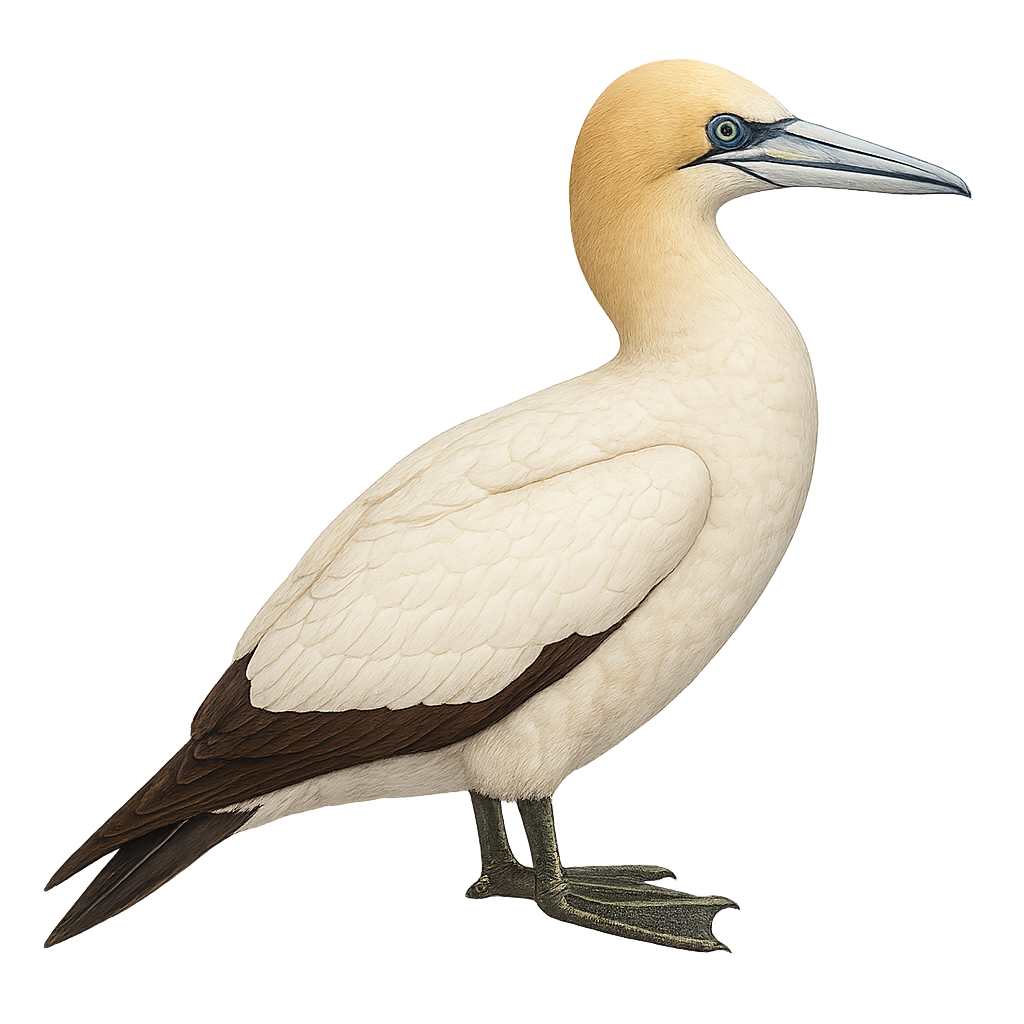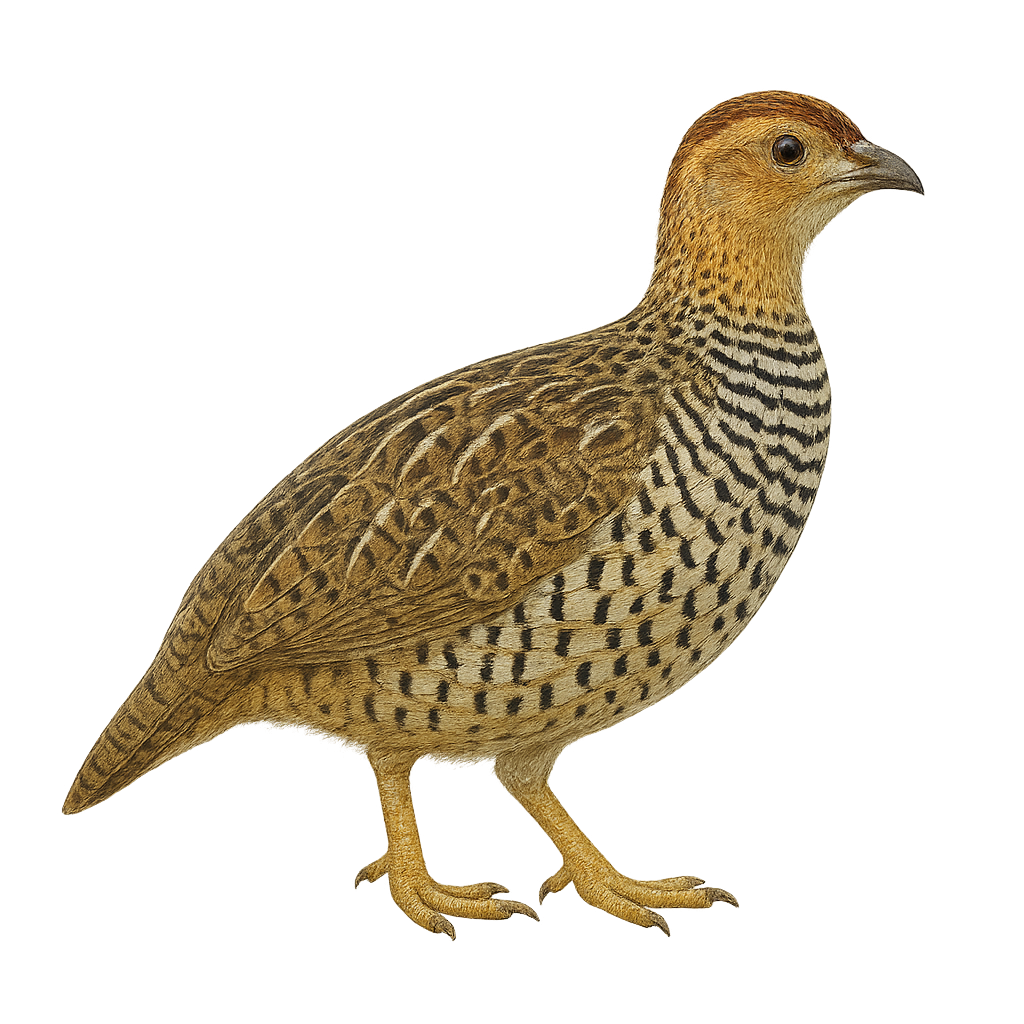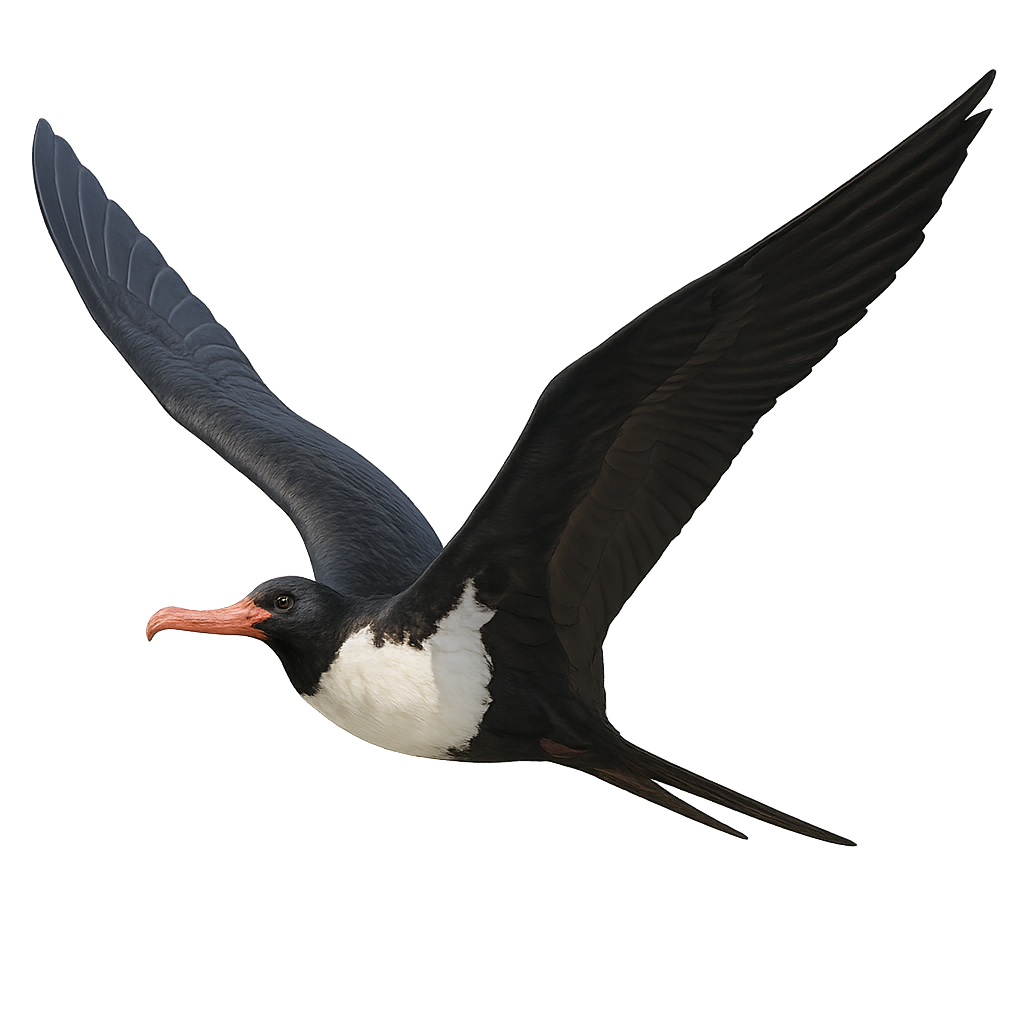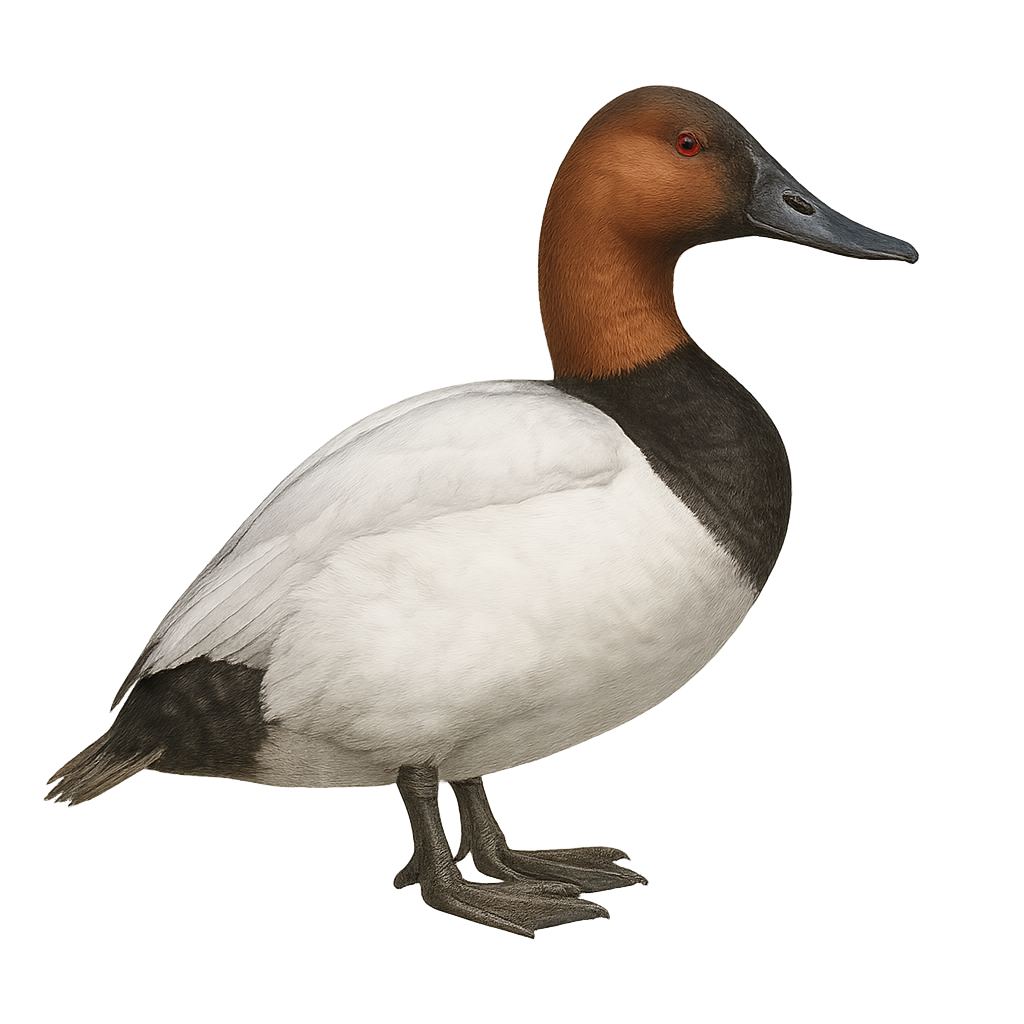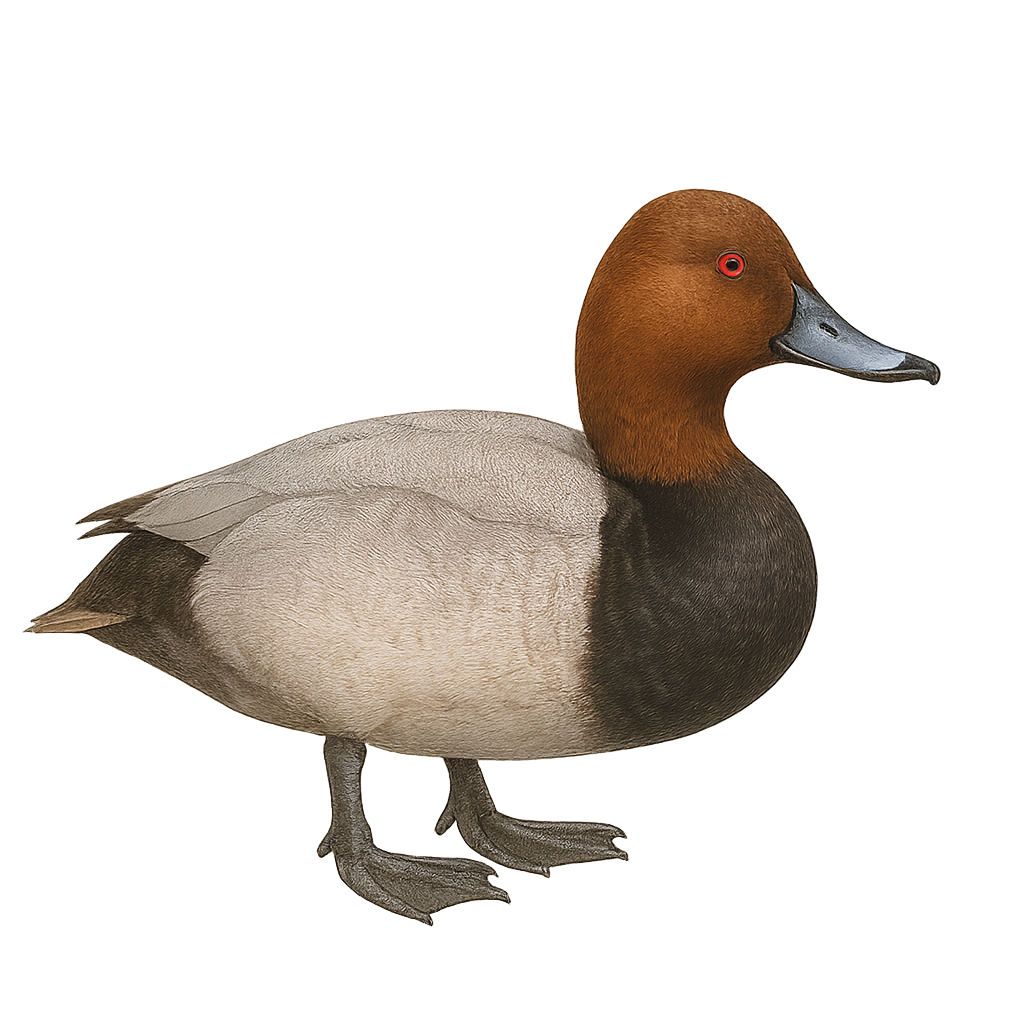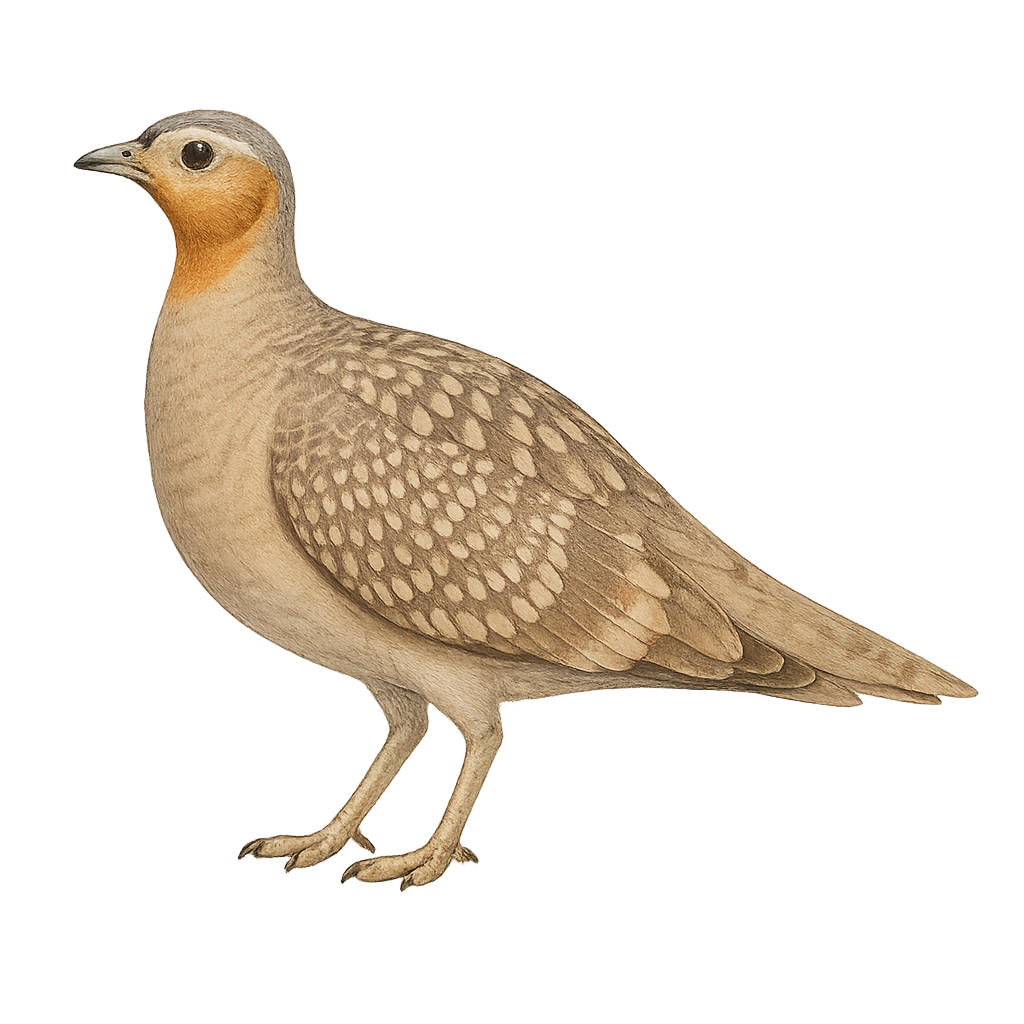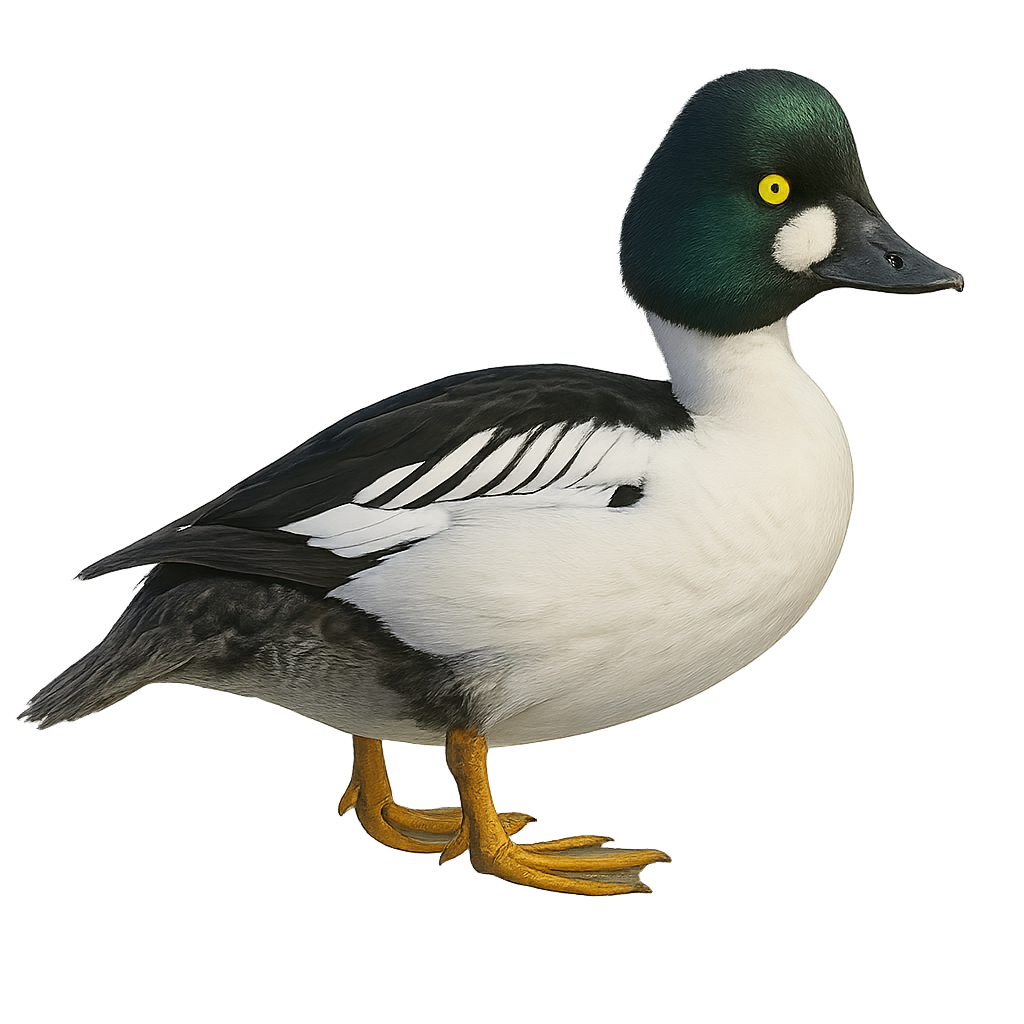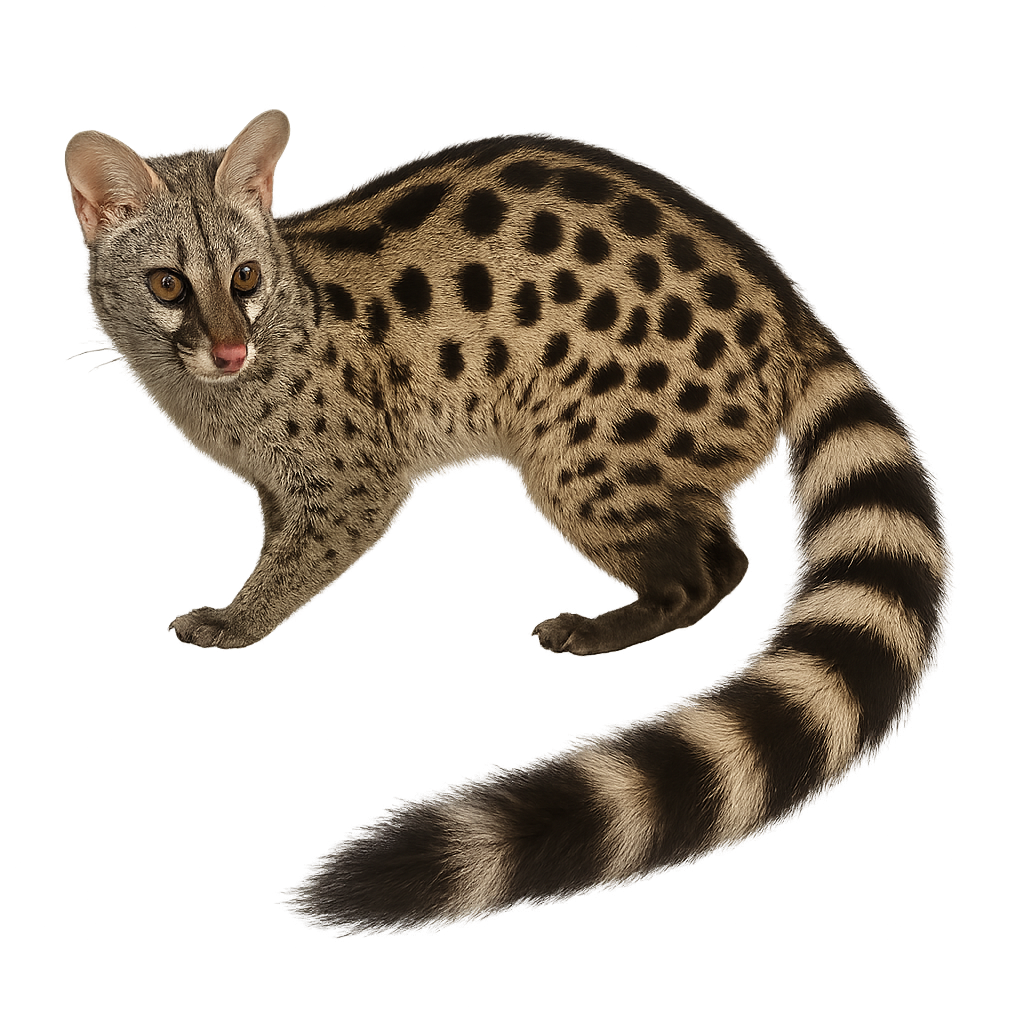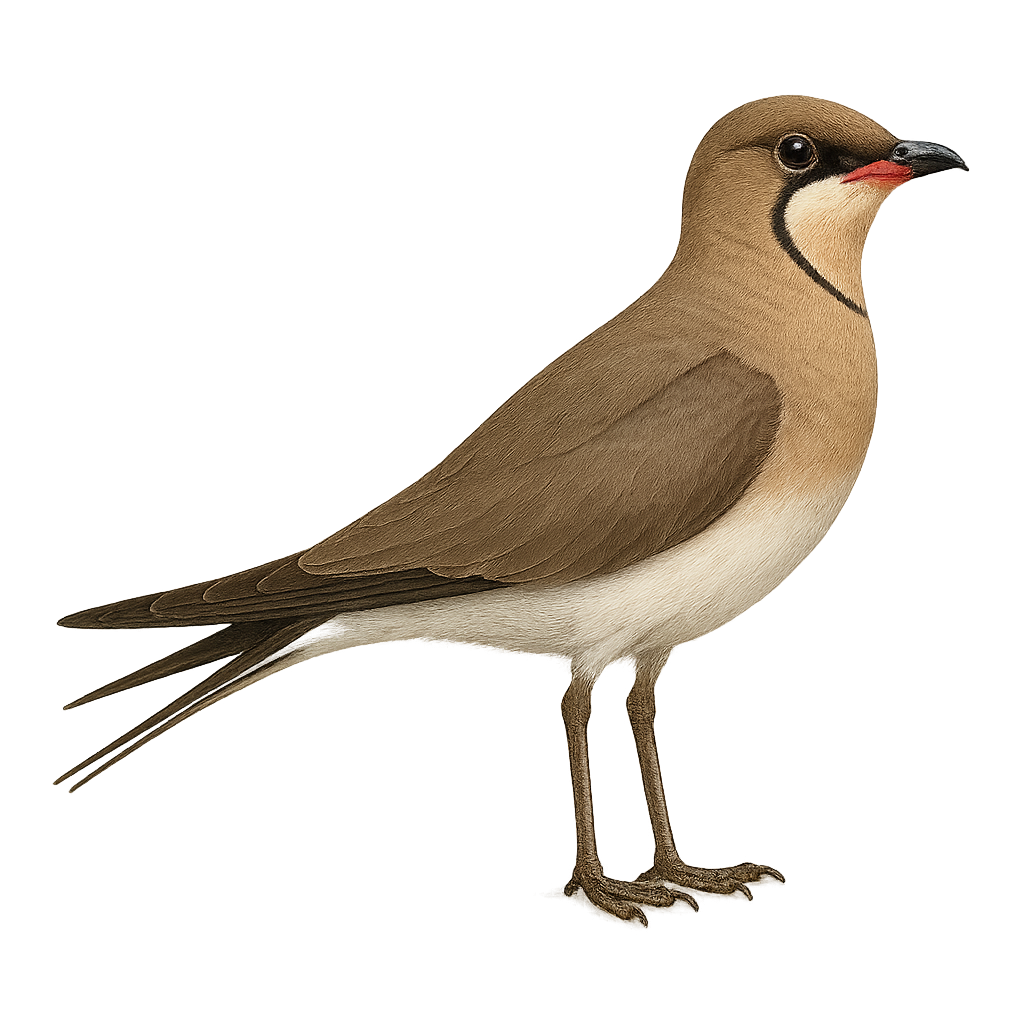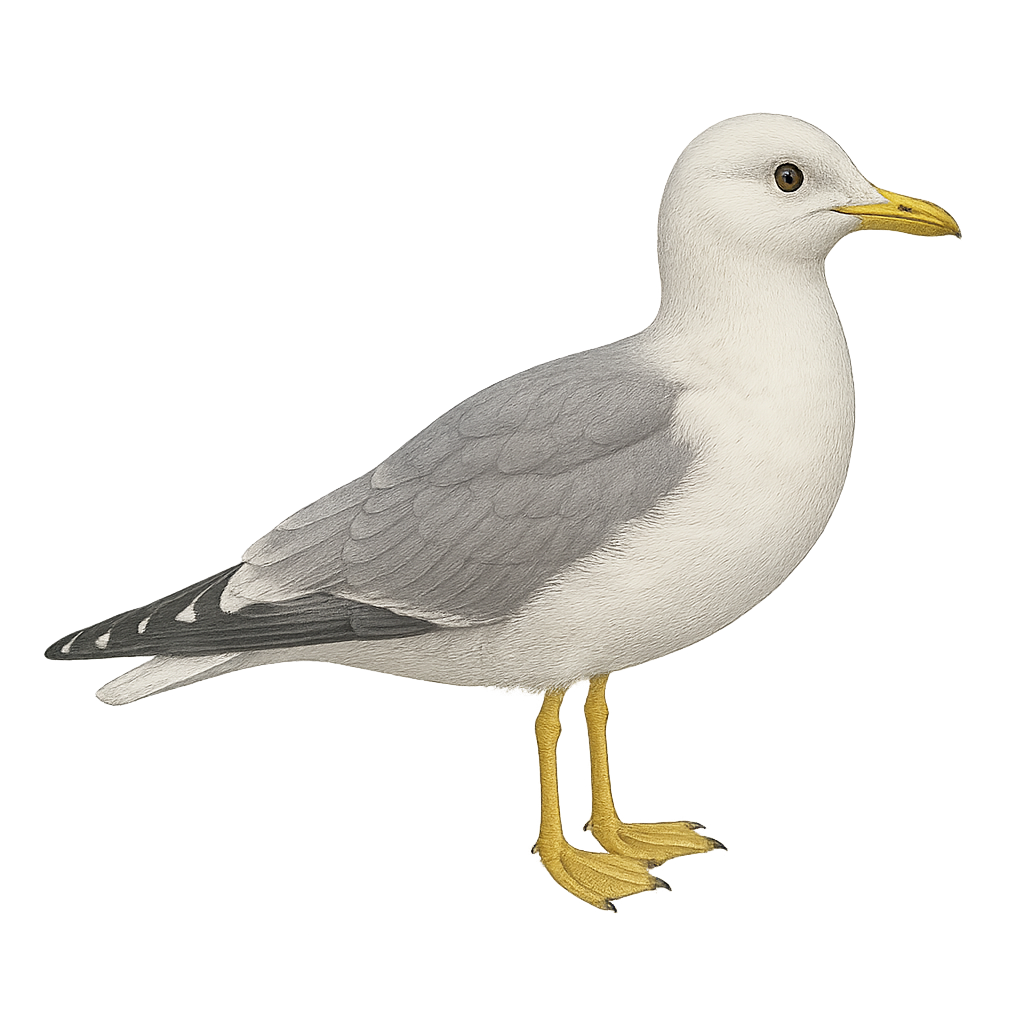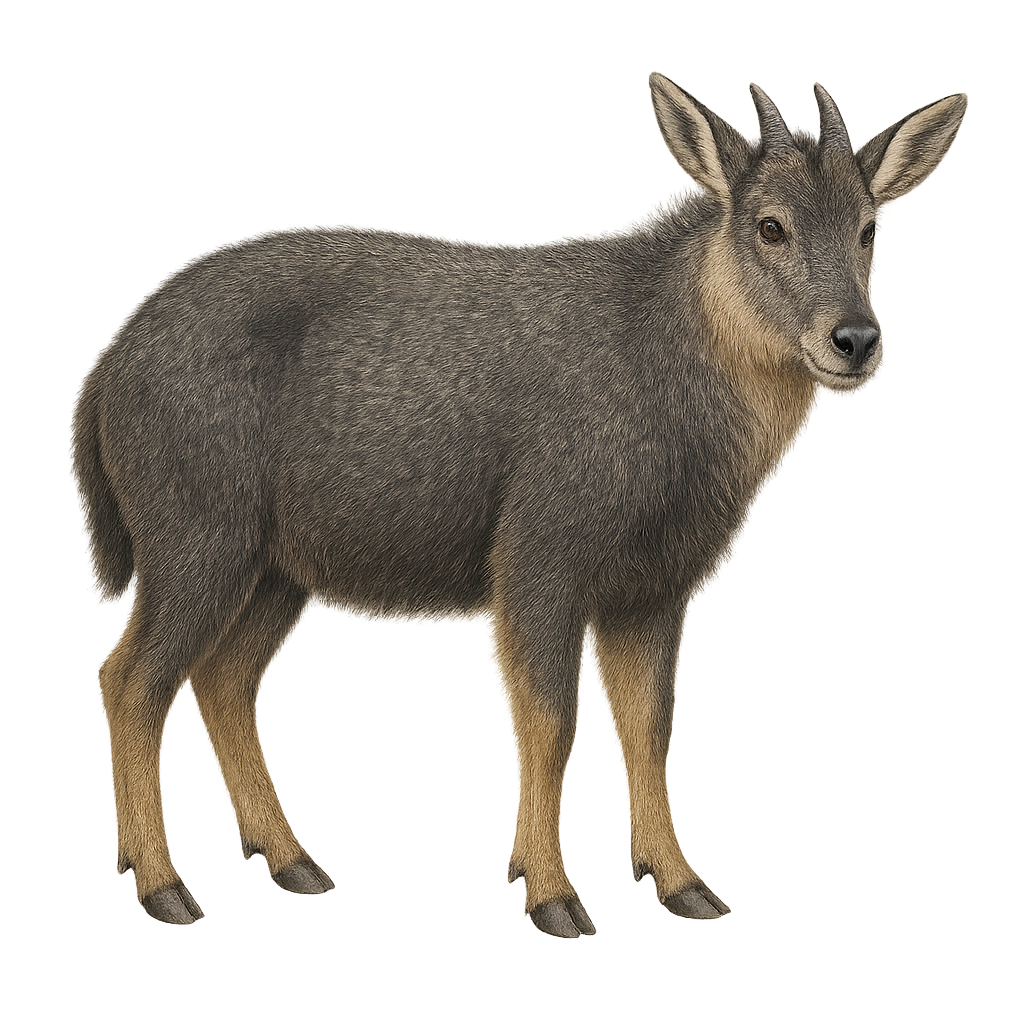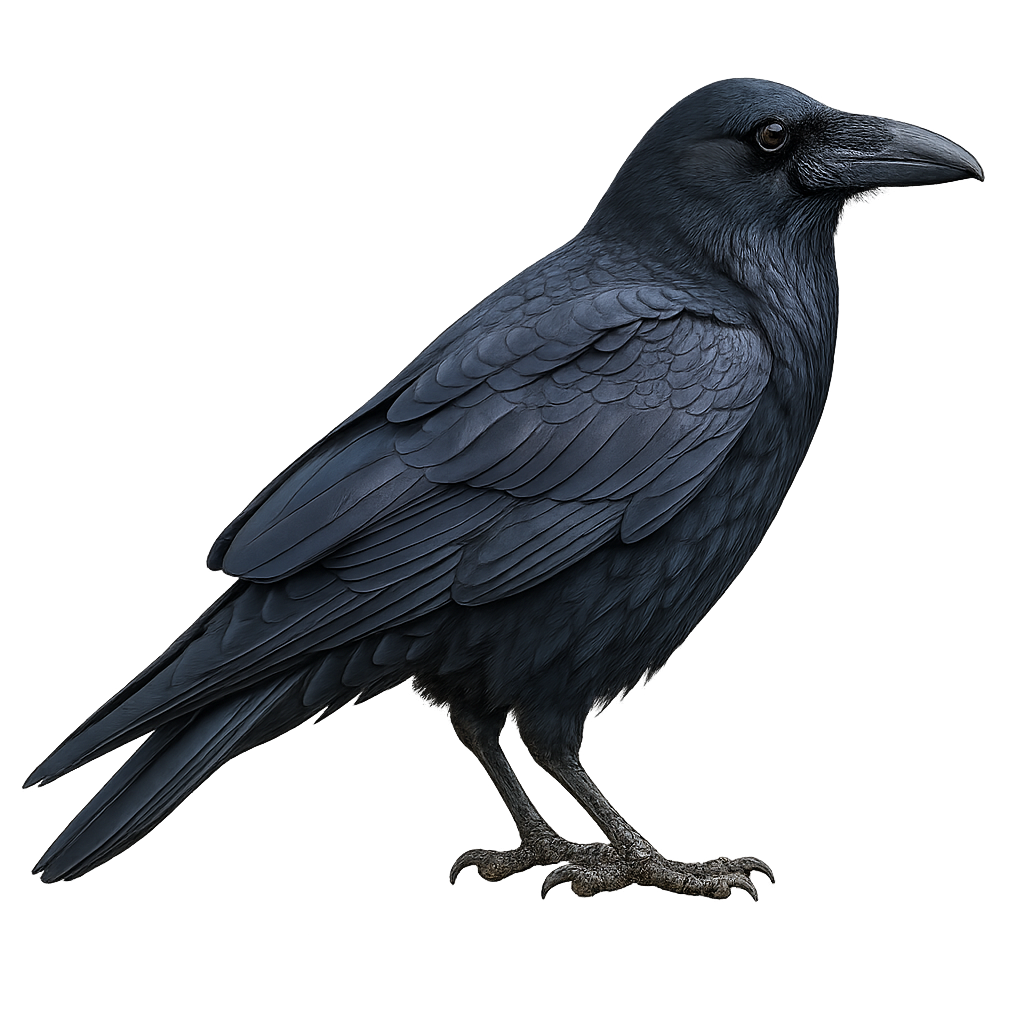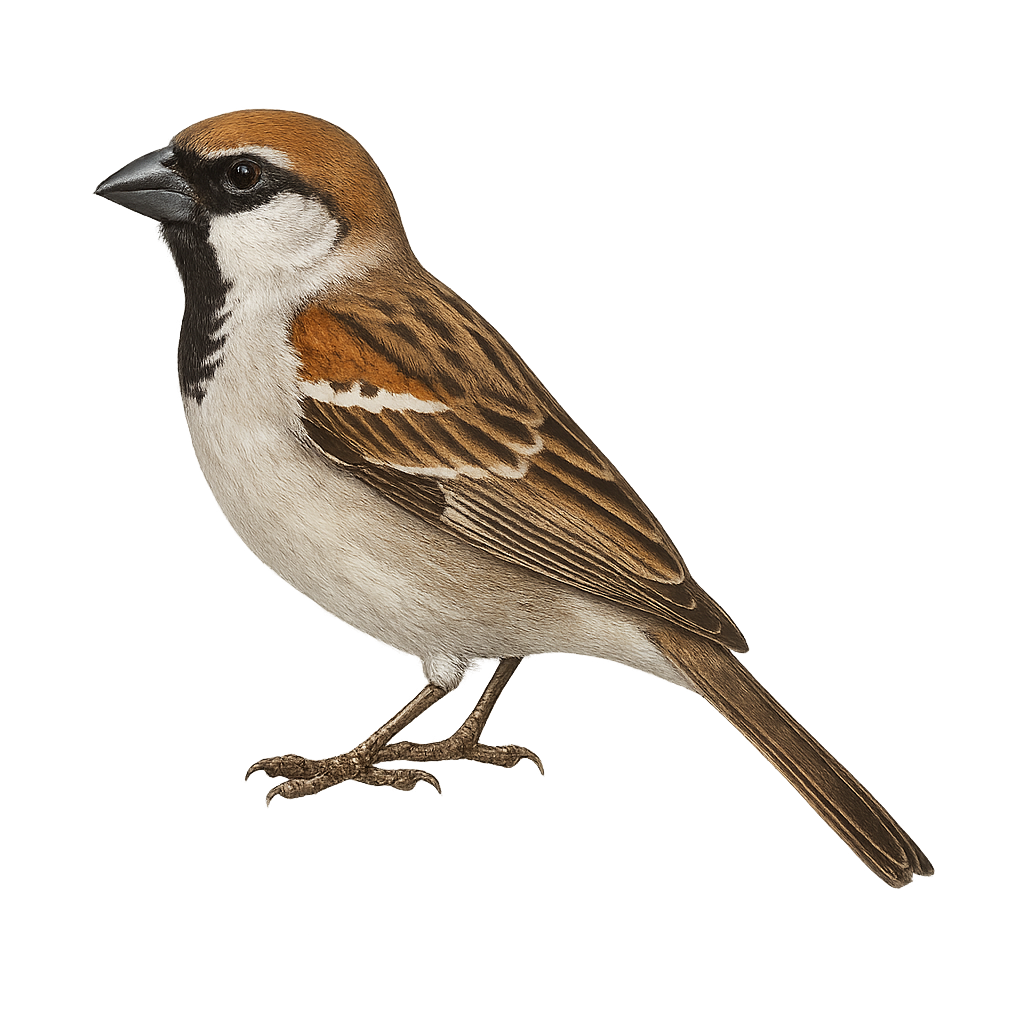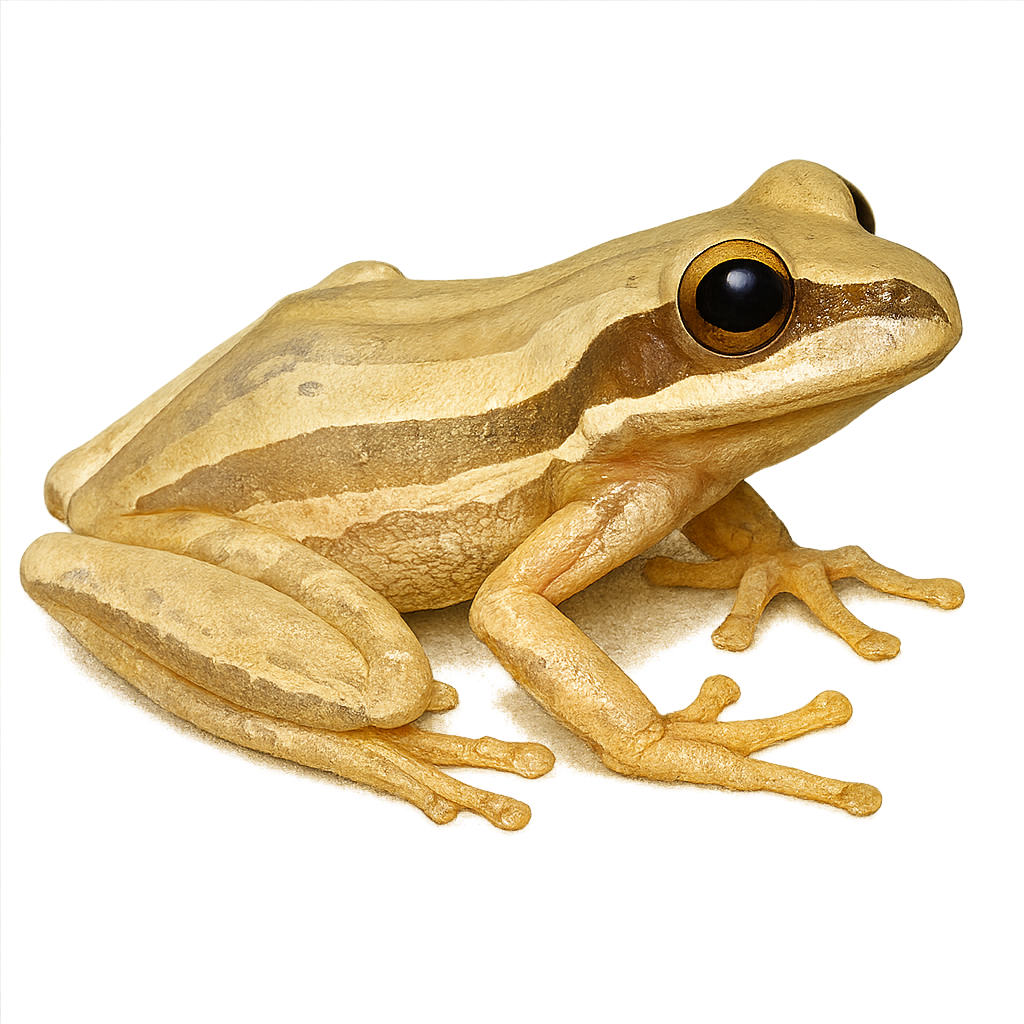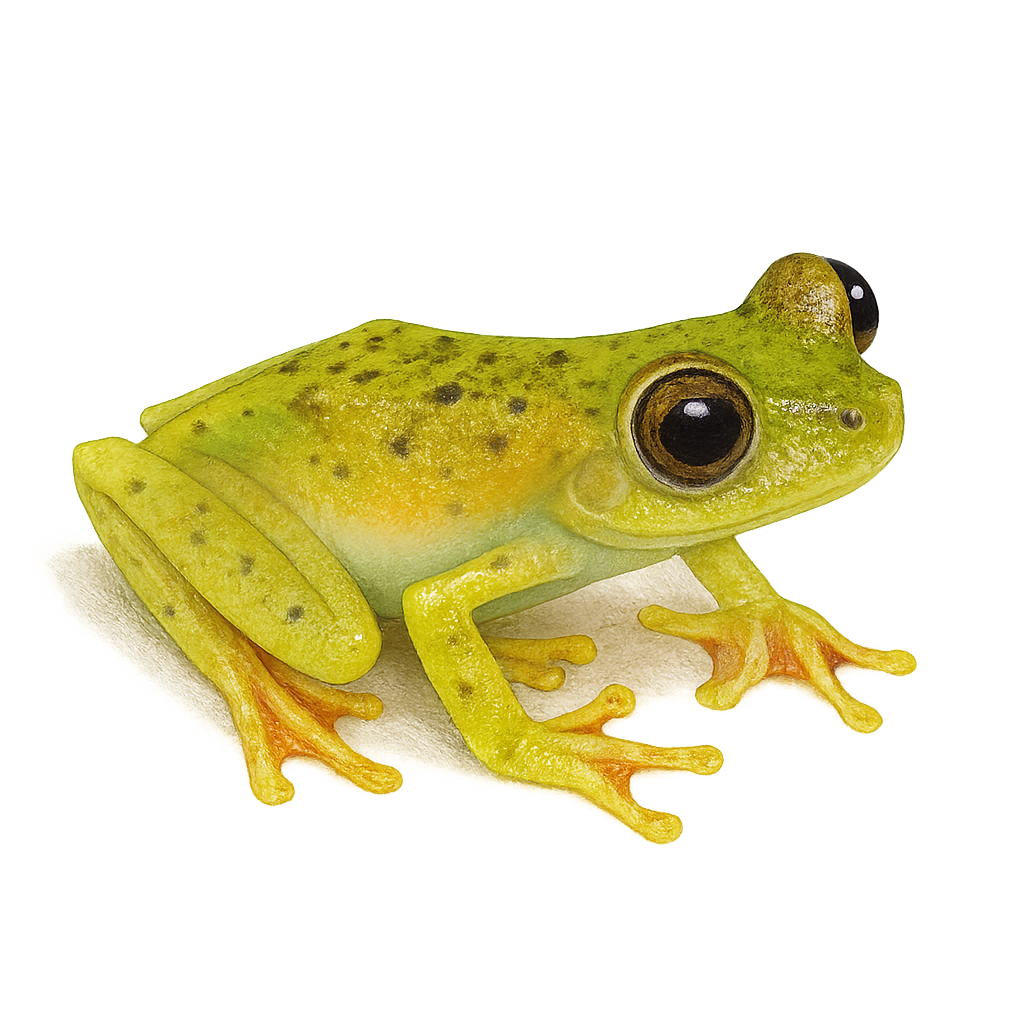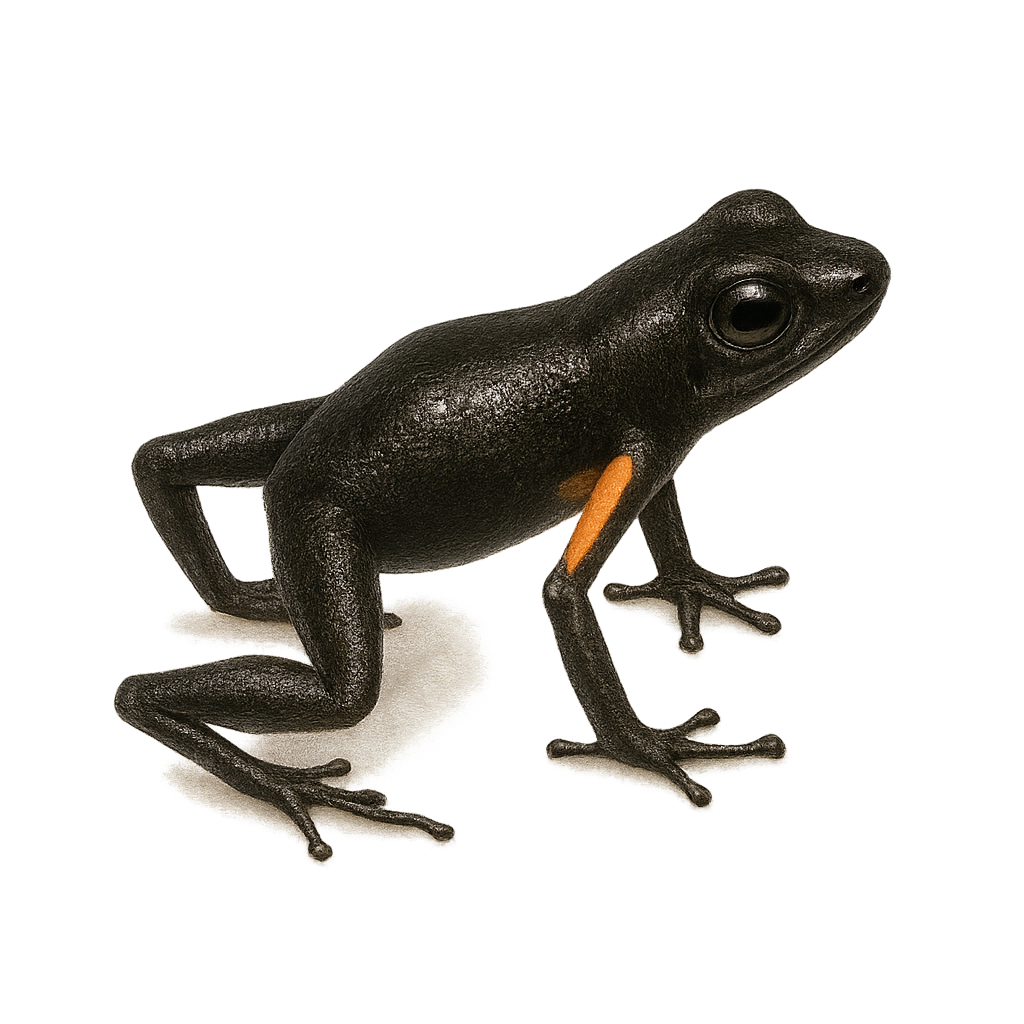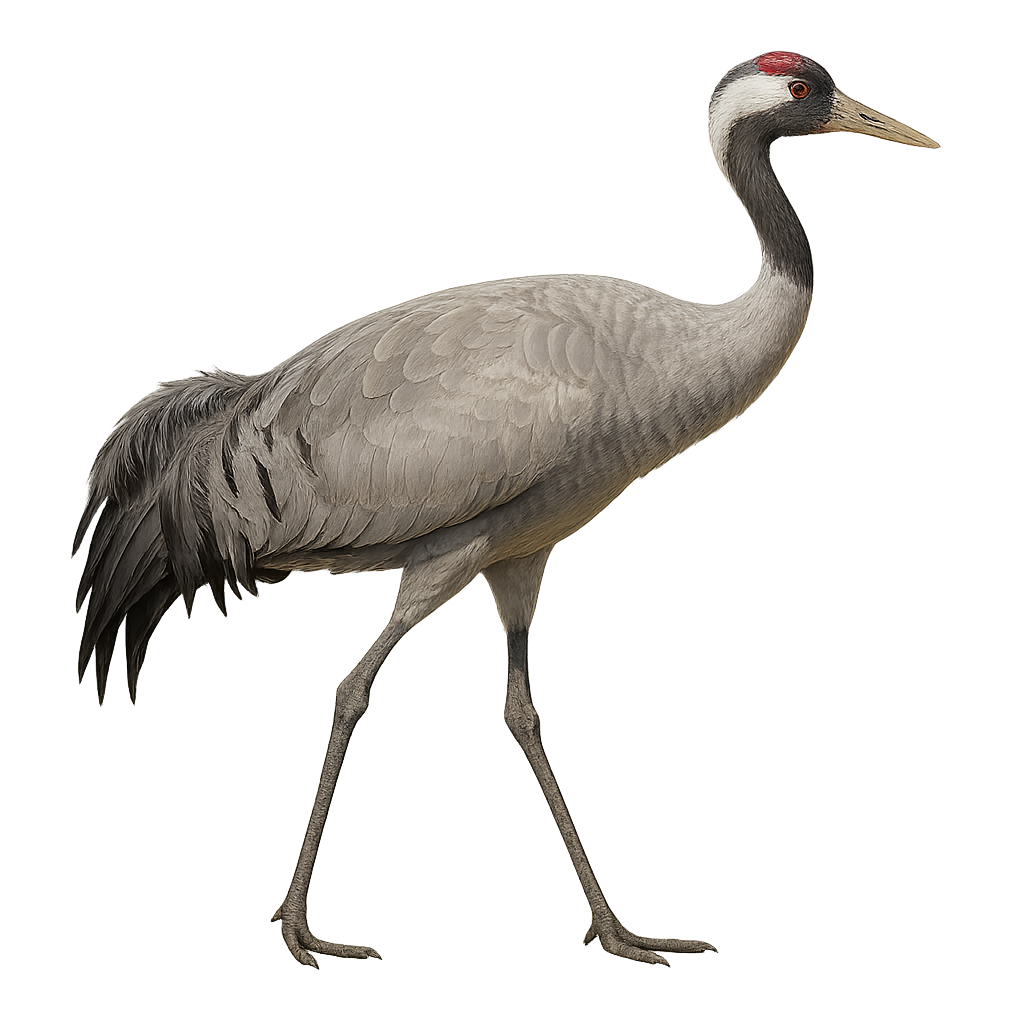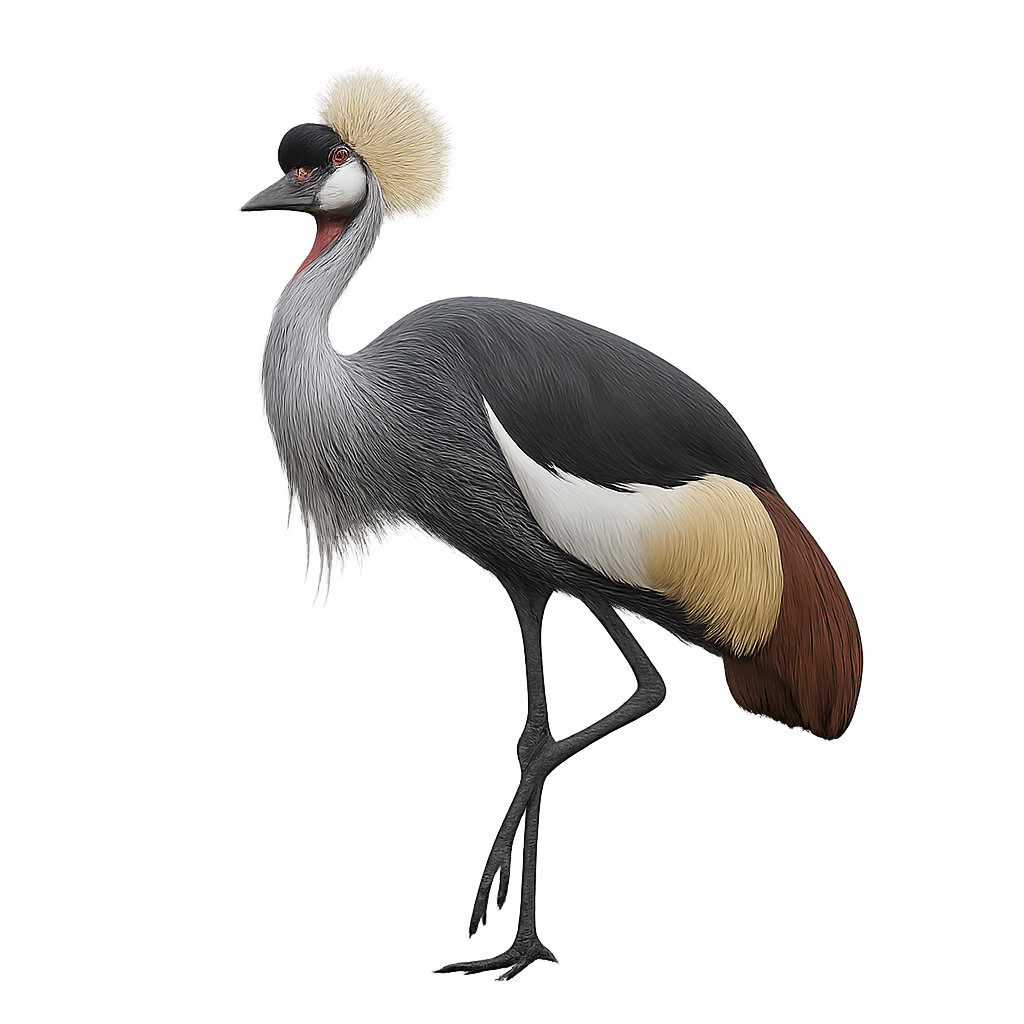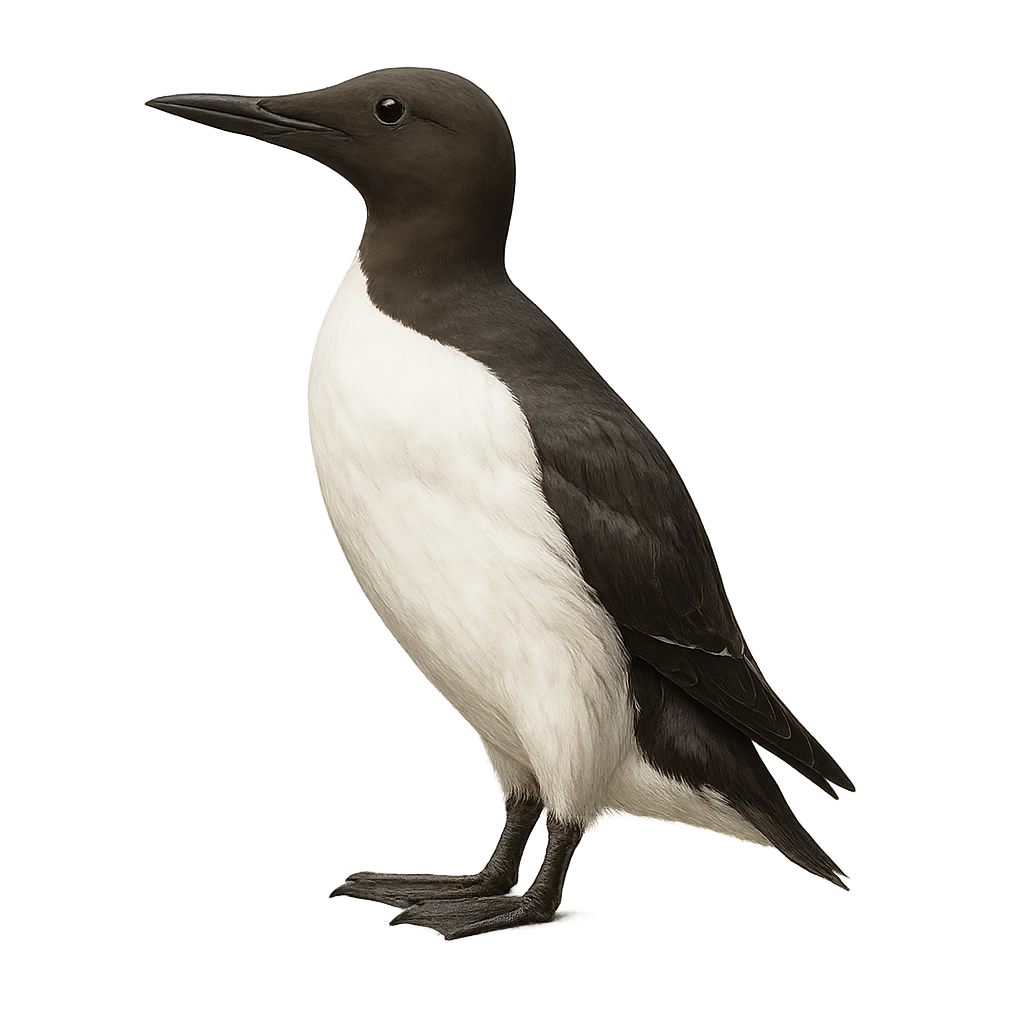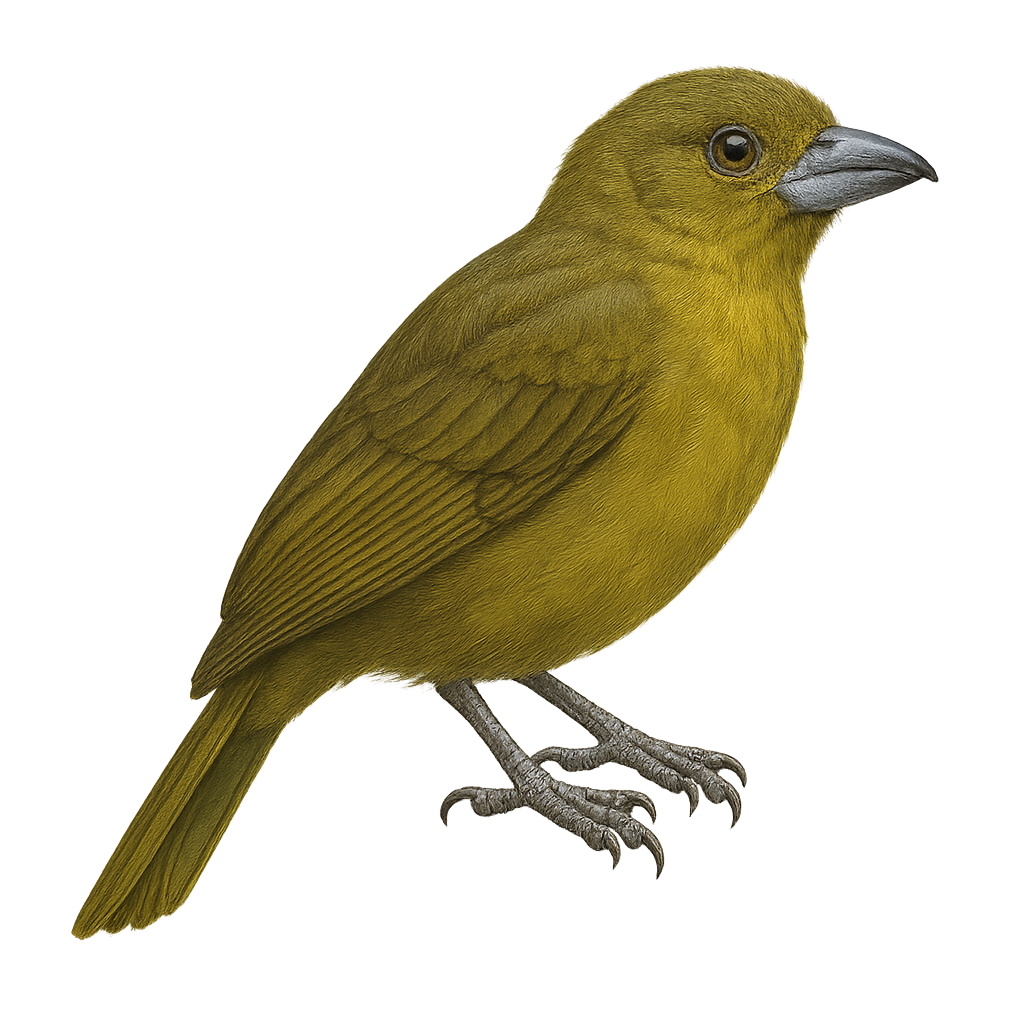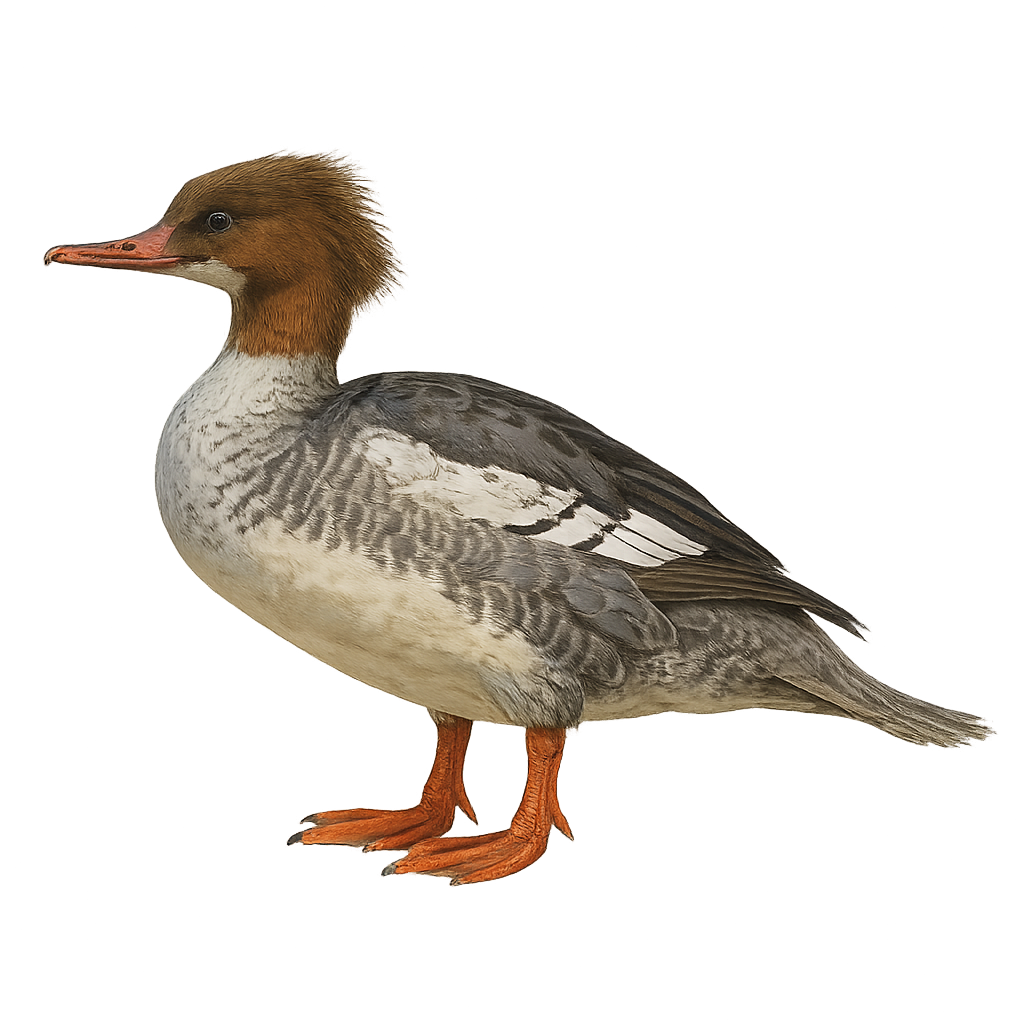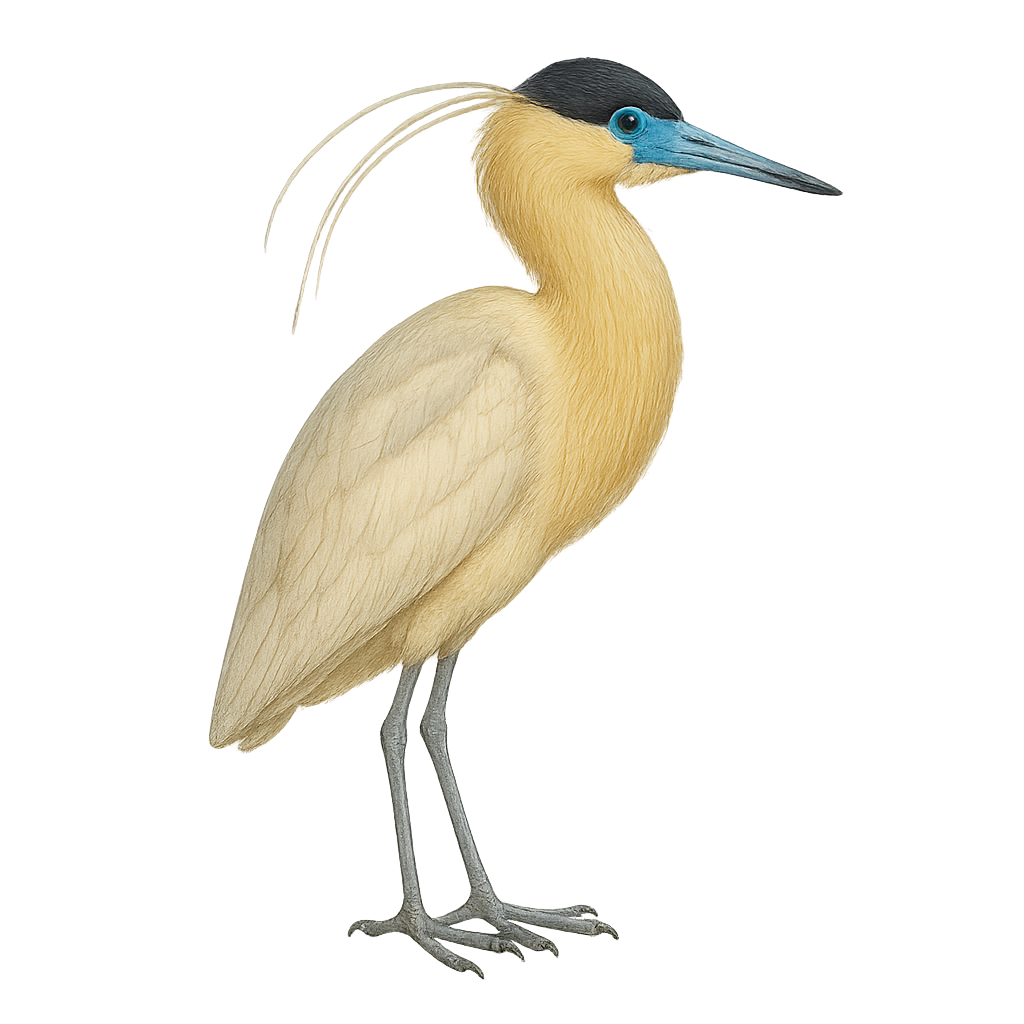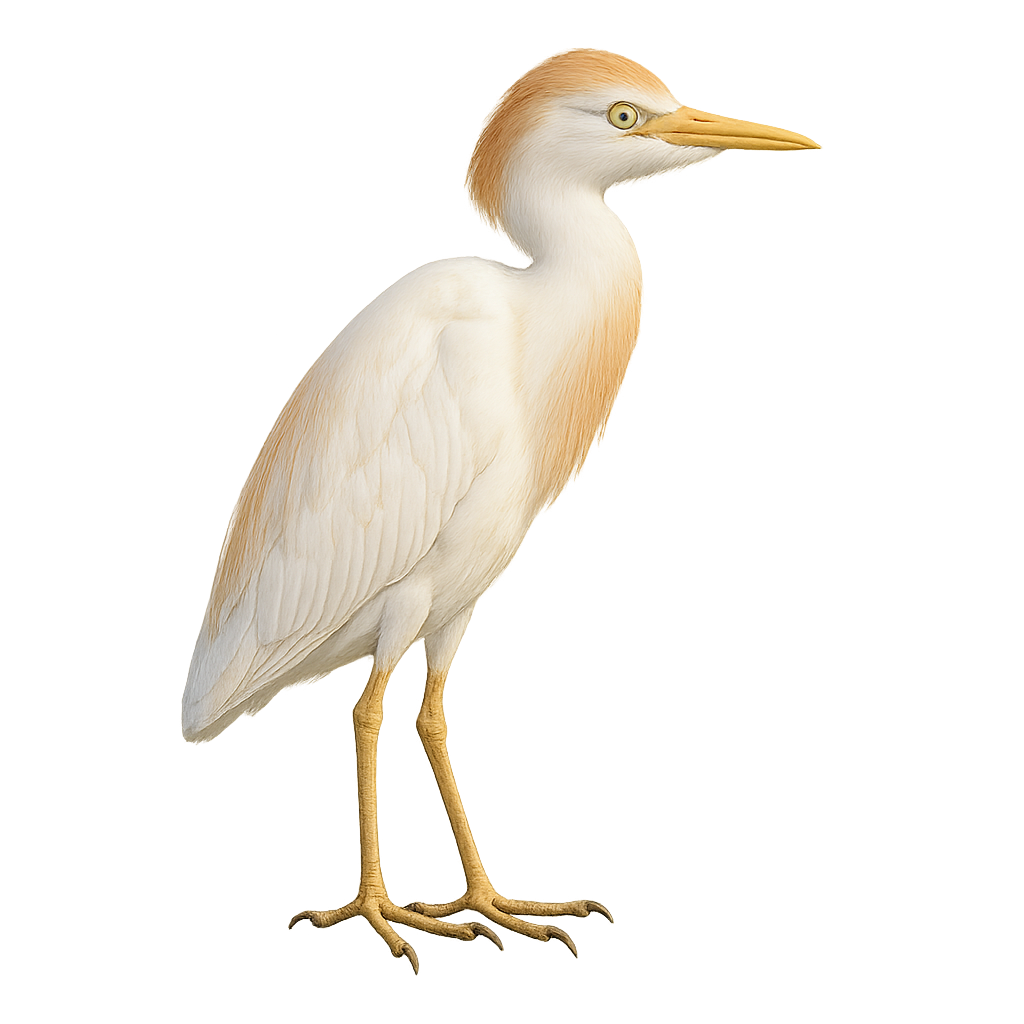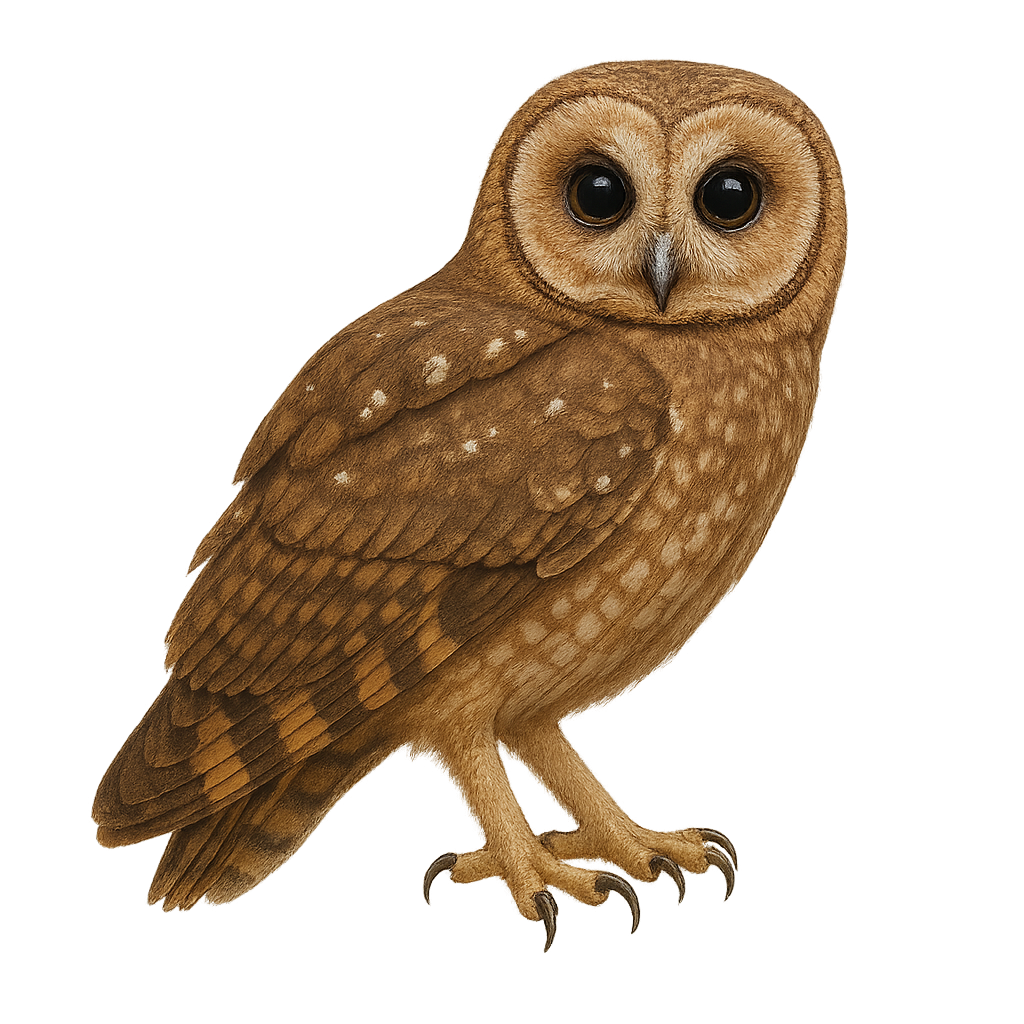The Cape Gannet, or Morus capensis, is a striking seabird native to the southern African coasts. With its bright white plumage, vivid yellow head, and piercing blue eyes, it is a captivating sight in flight, boasting long, slender wings. An exceptional diver, it feeds primarily on fish, which it catches by plunging at high speed into the ocean. Cape Gannet colonies are often noisy and lively, providing an impressive visual and auditory spectacle. They nest in large colonies on rocky islands, building rudimentary nests from various materials. Although their population is stable, they are vulnerable to environmental changes and overfishing, which can impact their food supply.
The common moorhen is an aquatic bird easily recognized by its black plumage, bright red beak, and white frontal shield. It is primarily found in wetlands, lakes, and marshes across Europe, Asia, and North Africa. The common moorhen is omnivorous, feeding on aquatic plants, insects, and small fish. It is also known for its territorial behavior and quick flights when disturbed.
The Coqui Francolin is a medium-sized terrestrial bird belonging to the Phasianidae family. It is primarily found in sub-Saharan Africa, frequenting savannas and open grasslands. This francolin is recognizable by its speckled brown plumage, which allows it to blend effectively into its natural environment. It has a relatively small head with a black cap and white cheeks. Males and females are similar, although males are slightly larger. The Coqui Francolin is a social bird, often seen in small groups. It primarily feeds on seeds, insects, and small invertebrates. Its breeding period varies by region but is generally linked to the rainy season when food is abundant.
The Christmas Island Frigatebird, or Fregata andrewsi, is a seabird endemic to Christmas Island in the Indian Ocean. This majestic bird is recognizable by its glossy black plumage and slender silhouette. Males display a bright red gular pouch, which they inflate to attract females. Frigatebirds are expert gliders, capable of flying long distances without flapping their wings. They primarily feed on fish and squid, which they catch at the water's surface. Unfortunately, this species is critically endangered, mainly due to habitat loss and human disturbances. Conserving their natural habitat is crucial for their long-term survival.
The Canvasback, Aythya valisineria, is a North American diving duck known for its distinctive profile and elegant plumage. The male features a reddish head, white back, and black bill, while the female has more subdued brown-gray tones. These birds prefer large freshwater bodies, feeding mainly on aquatic plants, seeds, and invertebrates. Their flight is fast and direct, often in small groups. During the breeding season, they nest in marshes and wetlands, building floating nests among reeds. Populations migrate south in winter, reaching the United States and Mexico. Although their numbers have fluctuated, conservation efforts have helped stabilize their populations.
The Common Pochard is a medium-sized diving duck, measuring between 42 and 49 cm in length. The male has a reddish-brown head, black breast, and light grey body, while the female displays a more subdued brown-grey plumage. This species inhabits lakes, ponds, and slow-flowing rivers rich in aquatic vegetation. It feeds mainly on aquatic plants but also consumes invertebrates. The Common Pochard is migratory, breeding in Europe and Asia, and wintering further south. It is currently classified as vulnerable due to population declines, primarily caused by habitat loss and pollution.
The Common Gallinule is a medium-sized waterbird, easily identified by its dark plumage and bright red bill with a yellow frontal shield. It primarily inhabits marshes, ponds, and lakes with dense vegetation. Agile and discreet, it feeds on aquatic plants, insects, and small fish. Although often solitary, it can be seen in small family groups. Its distinctive call, a sharp croak, often echoes at dusk. The Common Gallinule is an adaptable bird, capable of settling in various aquatic environments, contributing to its wide geographical distribution.
The Pterocles coronatus, or crowned sandgrouse, is a medium-sized bird known for its sandy-brown plumage, which provides excellent camouflage in desert landscapes. Its head is adorned with a distinctive crown, giving it its name. This bird is primarily found in the arid regions of North Africa and the Middle East. It is well adapted to dry environments, capable of traveling long distances in search of water. Crowned sandgrouse feed mainly on seeds and small insects. They are often seen in groups, flying swiftly and at low altitudes. Their social behavior is fascinating, with elaborate courtship rituals.
The Common Goldeneye is a medium-sized diving duck, measuring about 42 to 50 cm in length. The breeding male has a glossy dark green head, a distinct white spot below the eye, and a bright yellow eye. The female is brown with a chocolate-colored head and a subtle white collar. It inhabits lakes, slow rivers, and coastal bays in Europe, Asia, and North America. A migratory species, it nests in tree cavities or artificial nest boxes. Its diet includes mollusks, crustaceans, aquatic insects, and small fish. Though generally of Least Concern, it may be impacted locally by the loss of natural nesting sites.
The Cuvier's gazelle is a species of gazelle native to North Africa, mainly found in Algeria, Tunisia, and Morocco. It is characterized by its medium size, lyre-shaped horns, and light brown coat with white markings on the belly and legs. Adapted to arid environments, it inhabits steppes, mountains, and semi-desert areas. It is herbivorous, feeding mainly on grasses and leaves. The Cuvier's gazelle is an endangered species, primarily due to excessive hunting and habitat loss. Conservation efforts are underway to protect this iconic species of North African wildlife.
The Common Genet is a small, agile, and elegant carnivore, easily recognizable by its long and slender body, as well as its characteristic spots. It measures between 45 and 60 cm in length, with a tail measuring 40 to 50 cm, and typically weighs between 1.5 and 2.5 kg. Its coat is usually light gray or brown, speckled with dark spots that form a distinctive pattern on its back and flanks. The Common Genet has a bushy tail and a body shape that allows it to easily climb trees and slip into narrow spaces. It primarily inhabits forests, woodlands, and wooded areas in North and South Africa, as well as the Iberian Peninsula. This carnivore is omnivorous, feeding mainly on small mammals, birds, insects, fruits, and berries. The Common Genet is also an excellent climber, often seen moving through trees in search of food or to escape danger. While the Genet is not currently threatened, it faces threats related to habitat loss and human persecution.
The Collared Pratincole is an elegant bird, recognizable by its light brown plumage and forked tail. It features a distinctive black collar around its throat, contrasting with its white belly. Often seen in wetlands, grasslands, and marshes, it hunts insects in flight with remarkable agility. A migratory bird, it winters in sub-Saharan Africa after breeding in Europe and Asia. Known for its fast and graceful flights, often in groups, it emits sharp calls. Although its habitat is threatened by intensive agriculture and wetland drainage, it remains relatively widespread.
The common gull, or Larus canus, is a medium-sized seabird, identifiable by its light grey back and white underparts. Its wings feature a black band with distinctive white spots. The bill is yellow with a greenish tip, and its legs range from green to yellow. It inhabits coasts, lakes, and rivers, often in colonies. An opportunistic feeder, it consumes fish, invertebrates, and human waste. Partially migratory, it moves southward in winter. Its population is stable, though sensitive to environmental changes. The common gull is a social bird, often seen in groups, playing a crucial role in coastal ecosystems.
The Chinese goral, Naemorhedus griseus, is a medium-sized caprine native to the mountainous regions of East Asia. It is characterized by its gray-brown coat and distinctive mane running along its back. Both males and females have small, curved horns. Adapted to rugged terrains, it is agile and primarily feeds on leaves, grasses, and young shoots. Though elusive, it plays a crucial role in its ecosystem as a herbivore. Chinese goral populations are threatened by hunting and habitat loss, leading to their classification as near threatened by the IUCN.
The common raven is an impressive bird found in mountains, forests, and open areas across Europe, Asia, and North America. It is easily recognized by its large size, glossy black plumage, and hoarse call. This corvid is known for its exceptional intelligence and complex social behavior. It primarily feeds on carcasses, insects, and sometimes fruits and seeds.
The Ringed Plover is a small coastal bird, easily recognizable by its compact size and distinctive plumage. It measures about 20 to 23 cm in length, with a wingspan of 40 to 45 cm, and weighs between 40 and 60 g. Its plumage is mainly beige and white, with black markings on its head and chest, and a distinctive black band around its eyes. The Ringed Plover is a migratory bird, primarily found on beaches, shorelines, and mudflats, where it feeds on small invertebrates, such as worms, crustaceans, and insects. It is often seen running quickly on the sand, searching for food, then stopping abruptly to catch it. The Ringed Plover lives in colonies during the breeding season, but generally prefers to remain alone or in small groups. Although it is not currently endangered, the Ringed Plover is vulnerable to human disturbances, such as the loss of its coastal habitat and the impact of pollution.
The Cape Sparrow, or Passer motitensis, is a small, robust bird primarily found in southern Africa. It is characterized by its brown and grey plumage, with a black cap on males and a grey cap on females. These birds are often seen in groups, feeding on seeds, insects, and small fruits. They adapt well to urban and rural environments, nesting in cavities or artificial structures. Their song is a simple yet melodious chirp. Although their population is stable, they are sometimes threatened by habitat loss and competition with other sparrow species.
Boana latistriata, commonly known as the Cope's Eastern Paraguay Treefrog, is a species of amphibian in the Hylidae family. It is primarily found in the humid tropical forests of South America, particularly in Brazil. This frog is distinguished by its broad, dark lateral stripes that contrast with its green skin. It is generally nocturnal, feeding on insects and other small invertebrates. Its ability to adhere to vertical surfaces with its adhesive toes allows it to move easily in its arboreal habitat. Although its conservation status is concerning, it is still relatively widespread in some areas.
Boana rufitela is a tree frog known for its distinctive red spots on a bright green background, allowing it to blend seamlessly into its natural habitat. It is primarily found in the humid tropical forests of South America, where it resides in the tree canopy. This species is nocturnal, meaning it is mostly active at night, feeding on insects and other small invertebrates. Its skin is slightly toxic, serving as a defense mechanism against predators. The Boana rufitela plays a crucial role in the ecosystem by regulating insect populations and serving as prey for other animals. Although its population is stable, deforestation poses a potential threat to its habitat.
Andinobates abditus is a small, brightly colored frog belonging to the Dendrobatidae family. Native to the humid tropical forests of Ecuador, this species is known for its vivid colors that serve as a warning to potential predators. It typically measures between 1.5 and 2 cm in length. Like many frogs in this family, it possesses potent skin toxins. These frogs are primarily terrestrial and are often found in leaf litter. They are diurnal and primarily feed on small insects. Their reproduction involves parental care, where males carry tadpoles on their backs to water bodies. This species is currently classified as vulnerable due to habitat loss.
The Common Crane is a large migratory bird, easily recognizable by its slender silhouette, long neck, and extended wings. It stands about 1.2 meters tall, with a wingspan of 2 to 2.5 meters, and weighs between 4 and 6 kg. Its plumage is mainly gray, with white markings on the head, neck, and wings. It has a red head and a small tuft of feathers on top, giving it a distinctive appearance. The Common Crane primarily inhabits wetlands, marshes, and lakes across Europe and Asia, with large populations in Scandinavia, Germany, Poland, and the Mediterranean Basin. It is a migratory bird that travels to southern Europe and Africa for the winter. It feeds mainly on plants, roots, seeds, and occasionally insects. The Common Crane is also known for its impressive group migrations, with thousands of individuals flying in a "V" formation. While the species is not endangered, it is vulnerable to the loss of its natural habitat and disruption of its breeding sites.
The Crowned Crane is a large crane species, easily recognizable by its majestic golden plume crown on its head. It stands about 1 meter tall, with a wingspan of 1.8 to 2.2 meters, and weighs between 3 and 5 kg. Its plumage is mainly light gray, with white feathers on its belly and wings, and a head adorned with a golden crest, giving it a royal appearance. This species is primarily found in East Africa, notably in Uganda, Kenya, and Tanzania, where it inhabits wetlands, marshes, and grasslands. The Crowned Crane primarily feeds on seeds, roots, insects, and occasionally small vertebrates. It is a social bird, living in groups and often performing spectacular courtship displays, during which it engages in dances and calls. Although the Crowned Crane is considered "vulnerable," conservation efforts have been implemented to protect the species, as it faces threats from habitat loss, hunting, and human disturbance.
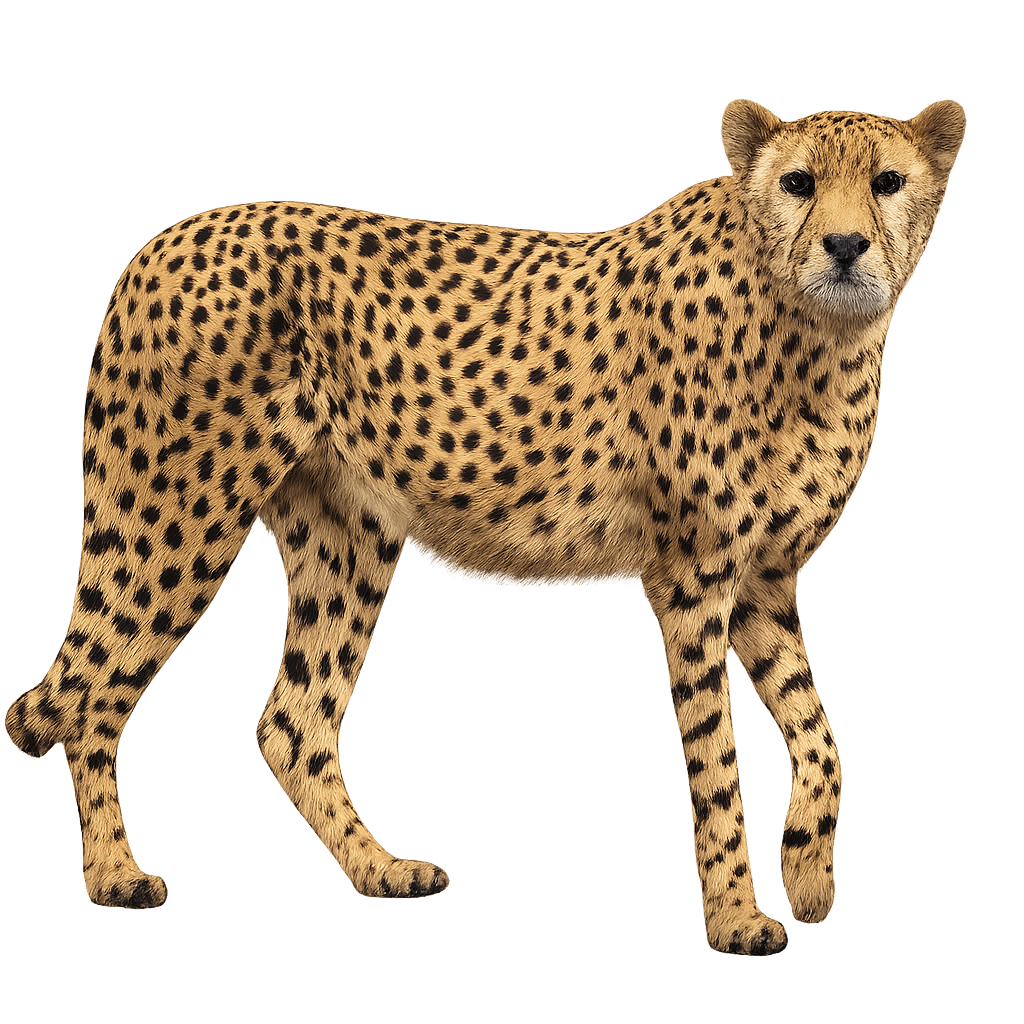
The Cheetah is a large feline known for its exceptional speed, making it the fastest land mammal. It measures about 1.1 to 1.5 meters in length, with a shoulder height of around 75 cm, and weighs between 40 and 65 kg. Its coat is short, golden to light brown with distinct black spots, allowing it to blend effectively in the savannas. It has a round head with large nostrils, sharp eyes, and distinctive black tear marks on its cheeks, which help it focus its vision while hunting. The Cheetah primarily inhabits sub-Saharan Africa, with small populations in Iran, in open habitats such as savannas, grasslands, and deserts. Carnivorous, it mainly feeds on gazelles, springboks, and other small animals. Unlike other large cats, the Cheetah hunts using speed rather than brute strength. It can reach speeds of 100 to 110 km/h in a few seconds, but this speed can only be maintained for short distances. Although the Cheetah is not critically endangered, it faces threats like habitat loss, poaching, and reduced natural prey.
The Chestnut-headed Bee-eater is a colorful and fascinating bird belonging to the Meropidae family. It is distinguished by its chestnut-colored head, bright green back, and vivid yellow throat. Its tail is long and tapered, often adorned with elongated central feathers. This bird is primarily insectivorous, feeding on various flying insects, especially bees and wasps, which it catches in flight with remarkable agility. It is found in open forests, woodlands, and grasslands of South and Southeast Asia. The Chestnut-headed Bee-eater is a sociable bird, often seen in groups, and it nests in burrows dug into sandy banks.
The Common Guillemot is a seabird characterized by its black and white plumage, and its streamlined body which allows it to swim with agility. It measures about 40 to 45 cm in length and weighs between 500 and 700 g. Its head is black with sharp white eyes, and its wings are short and pointed, suited for diving. The Common Guillemot primarily lives on coastal cliffs, where it nests in very dense colonies, often on inaccessible sites. It is found mainly in Northern Europe, particularly in Scandinavia, the United Kingdom, and Iceland, but also along the coasts of the North Atlantic. The Common Guillemot is an excellent diver, primarily feeding on fish, particularly small herring and capelin, which it catches by diving underwater in search of prey. While the species is not endangered, it is vulnerable to marine pollution, climate change, and disruption of its breeding sites.
The Carmiol's Tanager is a medium-sized bird, measuring about 18 cm in length. It features primarily olive-green plumage, with darker shades on the wings and tail. Its head is marked by a grayish cap, and it has a robust, slightly hooked beak suited for its varied diet. This bird primarily feeds on fruits, insects, and small invertebrates. It is mainly found in the humid forests and wooded areas of Central America, particularly in Costa Rica and Panama. The Carmiol's Tanager is often seen in small groups, actively moving through the canopy in search of food. Although not considered threatened, deforestation poses a potential threat to its natural habitat.
The Common Merganser is a large diving duck measuring between 58 and 71 cm in length, with a wingspan of 82 to 97 cm. The male features a dark green iridescent head, white body, and black back, while the female has a reddish-brown crested head and light gray body. This duck is characterized by its long, slender red bill with serrated edges, ideal for catching slippery fish. It inhabits clear-water rivers and lakes in forested regions of Europe, Asia, and North America. Nesting in tree cavities or cliff crevices, it lays between 6 and 17 eggs per season. Its diet mainly consists of fish, but also includes amphibians, crustaceans, and aquatic insects. Although listed as Least Concern, habitat loss can locally impact its populations.
The capped heron, or Pilherodius pileatus, is an elegant and distinctive bird, recognizable by its black head contrasting with its white body and long blue bill. It primarily inhabits the humid tropical forests of Central and South America, often near slow-moving rivers and swamps. This solitary bird is often seen fishing, using its patient hunting technique to catch fish and small invertebrates. Its breeding season varies by region but is generally associated with the rainy season when food is abundant. Although its conservation status is currently stable, deforestation and habitat loss pose potential threats to its populations.
The Cattle Egret is a small heron with primarily white plumage, featuring touches of yellow on the neck and head during the breeding season. It measures about 55 to 60 cm in length, with a wingspan of 90 to 100 cm, and weighs between 300 and 500 g. This heron is notable for its social behavior, often seen in the company of large herds of cattle or near farm animals, hence its name "cattle egret." It takes advantage of the presence of these animals to hunt insects, worms, and other small animals disturbed by the movement of livestock. The Cattle Egret primarily inhabits Africa, Asia, and parts of Europe, such as the Mediterranean. It feeds mainly on small invertebrates, insects, and occasionally small fish, and is particularly efficient in agricultural and wetland areas. Although the species is widely spread, it may be vulnerable to habitat loss and changes in farming practices.
The Cape Owl, Asio capensis, is a species of nocturnal bird of prey belonging to the Strigidae family. This owl is characterized by its brown plumage speckled with white and black, allowing it to blend seamlessly into its natural habitat. It has long tufts on its head, often erect, and piercing yellow eyes. It is primarily found in the wetlands, marshes, and savannas of sub-Saharan Africa. This owl is an opportunistic hunter, feeding mainly on small mammals, birds, and insects. Although its conservation status is concerning due to habitat loss, it remains relatively widespread in some areas.


